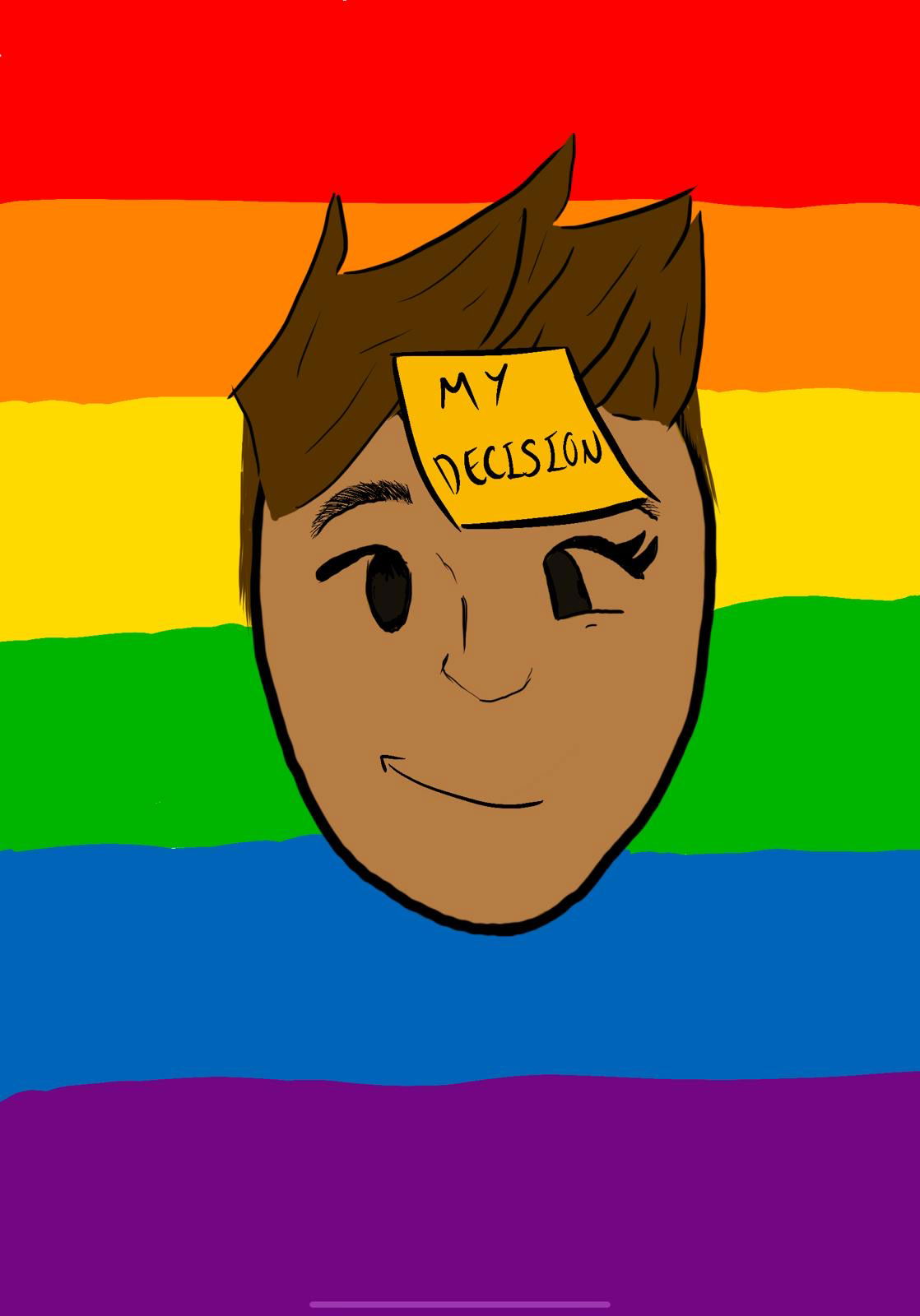Labels - Helpful or Harmful?

Article by Emma Bowles
Artwork by Indira Falle
There is no doubt that, over the last few decades, society has become a far more accepting place for people who do not identify as heterosexual or cisgender. The plethora of labels that have been popularised over these years have, in many ways, helped society’s understanding of different sexual orientations and gender identities. However, it is important to recognise that these labels, when misused or misunderstood, can be as harmful as they are helpful.
There is a definite pressure on people, especially young people who don’t identify as heterosexual or cisgender, to choose a label that describes them. Although there are lots of options, it can still feel like they are being forced to identify as something they aren’t, if they can’t find a label that perfectly fits them. Many young people are told they are ‘confused’ when trying to understand their sexual orientation or gender identity and this can be meant in a harmful way by people who are trying to convince them that they are actually heterosexual or cisgender. In truth, it is completely understandable that young people may be confused, as in our heteronormative society it can be hard to find representation of people who are like you without actively searching for it. Being labelled as ‘confused’ is also harmful and dismissive to people who are just trying to understand themselves. We’ve all heard someone say ‘it’s just a phase’ when discussing someone else’s sexuality or gender identity; not only is this extremely dismissive but, again, it is trying to convince that person that they are someone that they are not, just to conform to societal norms.
Labels can also have negative impacts when we impose them on people, for example, calling somebody who doesn’t identify as lesbian, ‘lesbian’, as an insult simply because they exhibit characteristics that are stereotypically associated with gay women. Firstly, this is forcing a label onto someone which is not okay. Secondly, it encourages stereotypes about lesbians and these can be dangerous as they can cultivate homophobia. Thirdly, using the word ‘lesbian’ as an insult insinuates that being a lesbian is a negative thing, which again cultivates homophobia. Another example of this is when people who are attracted to more than one gender are labelled based on the gender of their partner. This can be damaging as people who identify as bisexual or pansexual are often told that they are homosexual or heterosexual based on the gender of their partner. This is an example of bi/pan-erasure and it encourages the myth that people can only be attracted to one gender.
Some say that labels are the cause of the problems faced by the LGBTQIA+ community and proclaim that sexuality and gender identity don’t matter as we are all the same. But the problem with that is that we are not all the same and people have the right to express and celebrate their differences. In the UK it has only been legal to be homosexual for fifty-three years (since 1967). In seventy countries, to this day it is still illegal to identify as LGBTQIA+ and in twelve of these countries it is punishable by death; the WHO only declassified homosexuality as a disease thirty years ago. So it's understandable that people want to celebrate who they are now, as it has been against the law for them to do so for so long.
It is, however, important to recognise that labels can be helpful. Labels can be useful when discussing oppression as there is no doubt that homosexual, pansexual and asexual people (to name a few), all experience different obstacles in society. Labels can help people experience solidarity and find their community, which is extremely important as people who don’t identify as heterosexual often face discrimination and this can lead to depression and possibly even suicide. Having a place where people can just be themselves, without having to conform to societal norms, can help people avoid this.
To conclude, it is important that society realises and understands that not everybody is the same and labels are an important way to increase understanding, recognition and representation. However, forcing these labels onto people, misusing them, or encouraging stereotypes is not the purpose of these labels and should be actively avoided.
Glossary (all definitions from https://dictionary.cambridge.org/dictionary/english )
In order used in text
- Sexual orientation/sexuality – the fact of someone preferring to have sexual relationships either with men, or with women, or with both
- Heterosexual- sexually attracted to the opposite sex
- Heteronormative- suggesting or believing that only heterosexual relationships are normal or right and that men and women have naturally different roles
- Lesbian- a woman who is sexually attracted to other women
- Gay- sexually attracted to people of the same sex and not to people of the opposite sex
- Homophobia- a fear or dislike of gay people
- Bisexual- sexually attracted to both men and women
- Pansexual- sexually attracted to many types of people, without considering whether they are men or women
- Bi/pan erasure*- the tendency to ignore, remove, falsify, or reexplain evidence of bisexuality or pansexuality in history, academia, the news media, and other primary sources. In its most extreme form, bi/pan erasure can include the belief that bisexuality and pansexuality do not exist.
- LGBTQIA+ - abbreviation for lesbian, gay, bisexual, transgender, queer, intersex, asexual and all sexualities and gender identities
- Asexual- having no interest in sexual relationships
- Gender identity – a person’s feeling of having a particular gender
- Cisgender- used to describe someone who feels that they are the same gender as the physical body they were born with
- Transgender- used to describe someone who feels that they are not the same gender as the gender they were said to have when they were born
*definition from https://en.m.wikipedia.org/wiki/Bisexual_erasure
Educational Resources and Further Reading:
